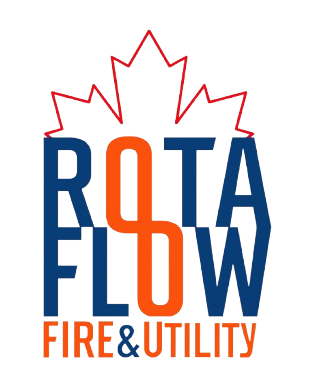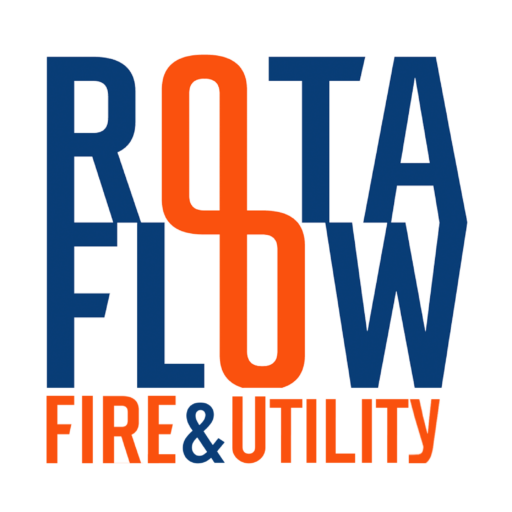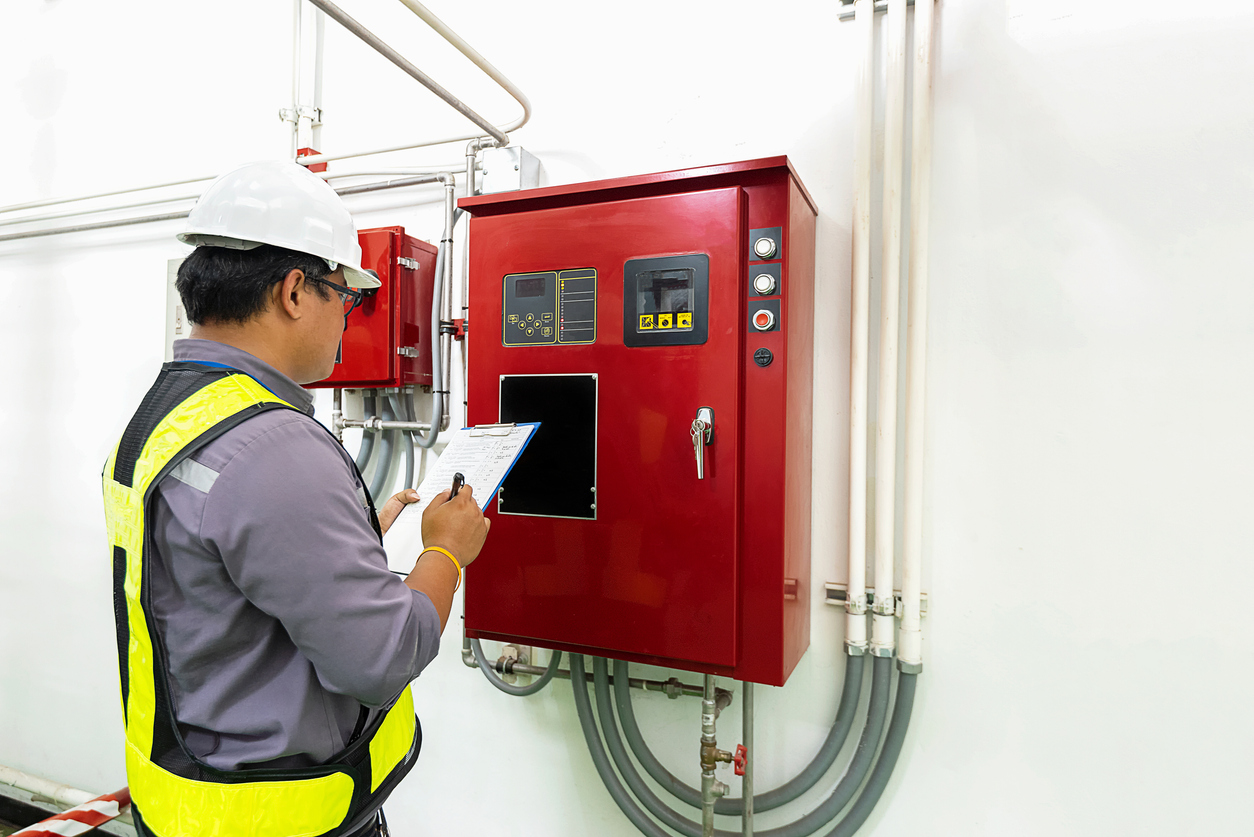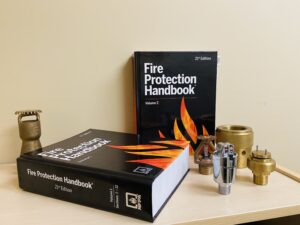INTRODUCTION: Remote inspections have increased significantly in recent years, with NFPA, ICC, and local codes expanding their rules and recommendations. Remote inspections are performed using sophisticated technological tools transmitted by one party to a qualified person, reducing or eliminating inspector risk exposure to hazardous conditions, pandemic restrictions, and dangerous tasks. Inspection costs are reduced with less travel expenses, scheduling, and site access. Real-time communication, feedback, reporting, metadata, and logs indicate verification of the work performed. Remote inspections are eco-friendly by helping to reduce global carbon footprint.
They use the same tools as traditional inspections, such as cell phones, drones, iPads, and 360° cameras, but broadcast the inspection feed live or recorded to a distant location. Model codes, such as the International Building Code and reference standards, do not prohibit remote inspections. Remote video inspections provide economies of scale, reducing redundant inspections. Remote inspection platforms and digital offerings are numerous, but there are many areas to improve upon. Code and standards compliance and the demand for inspection reports on new and existing construction is increasing and the available qualified workforce is not meeting the demand. Diversifying the workforce and construction technology with digital tools and processes improves project management and facilities management.
WHAT IS REMOTE INSPECTION?
An alternative to an in-person physical inspection is a remote inspection. In contrast to the on-site physical inspection, which is carried out by a qualified individual in person, the remote inspection procedure is carried out utilizing cutting-edge technological instruments that are communicated from one party to a qualified individual. In other words, when someone is using the digital inspection instrument, such as a camera, on a job site, the inspector is synchronously or asynchronously reviewing the material, such as the video, for compliance with the codes and standards from a different place. An alternative to
an in-person physical inspection is a remote inspection. In contrast to the on-site physical inspection, which is carried out by a qualified individual in person, the remote inspection procedure is carried out utilizing cutting-edge technological instruments that are communicated from one party to a qualified individual. In other words, when someone is using the digital inspection instrument, such as a camera, on a job site, the inspector is synchronously or asynchronously reviewing the material, such as the video, for compliance with the codes and standards from a different place.
BENEFITS OF REMOTE INSPECTION
For new installations or existing systems, the remote inspection application for code officials or sprinkler contractor inspectors has several advantages, including:
- Minimizes or completely eliminates the inspector’s exposure to harmful situations, pandemic limitations, and risky jobs.
- Qualified inspectors are able to utilize their time and abilities more effectively thanks to global collaboration and workforce optimization.
- Less travel, scheduling, and site access all result in lower inspection costs.
- The work done has been verified via real-time communication, feedback, reporting, metadata, and logs.
- Inspections may be scheduled, carried out, and approved outside of regular office hours.
Remote inspections help to lessen the world’s overall carbon footprint, making them environmentally friendly.
TOOLS OF THE REMOTE INSPECTION
Aspects of remote inspections are frequently not brand-new. Small video cameras have been used by sprinkler contractors to inspect pipes. In order to confirm that a field adjustment was made, code officials have requested images. Drones are used by facilities and contractors to check a procedure in inaccessible locations. The same technologies, such as smartphones, drones, iPads, and 360-degree cameras, are used in remote inspections, but the inspection feed is broadcast live or recorded to a different location, where a competent individual reviews the data on typical office equipment like a computer and monitor.
IS IT ALLOWED BY CODE?
Remote inspections are not forbidden by referenced standards like NFPA 13 and NFPA 25 or model codes like the International Building Code. By giving licences, codes mandate that inspections be carried out on a regular basis while work is being done. Standards like NFPA 25 call for periodic inspections and testing, many of which can be carried out via remote inspection methods. The examination can be carried out in a variety of ways, not just by a live person performing visual inspection or testing.
WHO IS QUALIFIED TO APPROVE REMOTE INSPECTION?
This technological development enables more efficient utilisation of personnel. For instance, the qualified individual evaluates the digital content and issues an approval or correction from a central distant location, whether they are a licenced inspector, engineer, or code official. People with different skill sets execute the camera or drone work on the job site. They may send them to specific spots on the job site and have them follow a script, or they may direct them live. Remote video inspections offer a number of scale economies. Many times, one remote video inspection can be examined in one place by a number of certified individuals, including the building, plumbing, and fire departments, which cuts down on the number of unnecessary inspections. These actions are regarded as inspections that adhere to the rules and regulations.
WHERE IS IT GOING?
There are many digital and remote inspection platforms accessible. The advantages listed above are numerous, but there is still much room for improvement, particularly in terms of mobile data availability, video quality, and financial resources. Distance monitoring and remote inspections are not outdated technologies. The demand for inspection reports on both new and existing construction as well as compliance with codes and standards is rising, but the supply of skilled workers cannot keep up with the demand. The project management and facilities management are improved by diversifying the personnel and construction technologies with digital tools and processes.
IS THIS THE END OF IN-PERSON INSPECTIONS?
It can be difficult to find, train, and keep inspectors for governments and contractors. For these positions, there is a declining labor pool. Travel and training expenses are reduced by using digital assets for remote inspections, remote monitoring, and off-site verifications. Additionally, it enables the competent staff to concentrate on critical jobs like equipment maintenance rather than tedious but crucial inspection activities.
NEWER TECH FOR INSPECTION
Construction and inspection paperwork have not yet met the blockchain, even though remote inspections appear to be on the cutting edge of modern technology and consumer application. Smart contracts for service work, remote monitoring, and remote inspections could be stored and executed on future iterations of block chains that contain property or geographic information. The immutable (unchangeable) data that the blockchain stores is one of the main distinctions between block chain data and a database. All stakeholders must have access to stable, trustworthy, and consistent data on a local, national, and international level in order to promote, set up, and manage fire protection systems. Although they have not yet reached their full potential in the fire sprinkler business, blockchain technology and artificial intelligence (AI) are two instruments that are well on their way. The dependability and reliance on fire sprinkler systems are promoted by having consistent and accurate construction, inspection, and building maintenance records.
The National Fire Sprinkler Association’s Vice President of Codes, Standards, and Public Fire Protection, Jeffery Hugo, wrote this issue of TechNotes.



